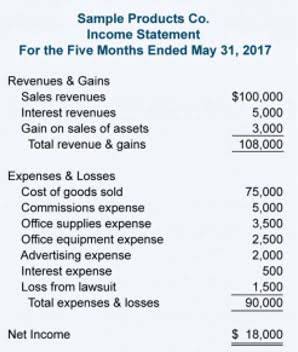
Let’s illustrate how the calculation of the present value of an annuity is used in recording an accounting transaction. We use simple algebra and the appropriate present value factor to determine that each of the six payments will be $2,000. The first payment will be made on June 30, 2025 and the final payment will occur on December 31, 2027.
Example of Calculating the Present Value of an Ordinary Annuity
- The fund begins on June 1, 2025 and the first monthly withdrawal takes place on July 1, 2025.
- The tables provide the value now of 1 received at the beginning of each period for n periods at a discount rate of i%.
- Companies that purchase annuities use the present value formula — along with other variables — to calculate the worth of future payments in today’s dollars.
- The same formula can be used for cash inflows as well as cash outflows.
- It is a simple table that features the PVIFAs of common combinations of rates and terms.
- You might think that you’re willing to pay up to €240,000 but this would not be financially wise.
To account for payments occurring at the beginning of each period, the ordinary annuity FV formula above requires a slight modification. In contrast to the FV calculation, the PV calculation tells you how much money is required now to produce a series of payments in the future, again assuming a set interest rate. In an ordinary annuity, you make payments or receive them at the end of each period, such as at the end of a month or year. To solve for the present value of your policy, you will multiply your annuity’s monthly payment by the assigned value on the table.

What Is an Example of an Ordinary Annuity Payment?
Higher interest rates result in lower net present value calculations. This is because the AI in Accounting value of $1 today is diminished if high returns are anticipated in the future. The present value (PV) of an annuity is the current value of future payments from an annuity, given a specified rate of return or discount rate.
Mid-Year Convention / Compounding Frequency PV Tables
Payments are made at the end of every period into an account until the bond matures. An annuity due is the type of annuity that requires a payment at the beginning of a period. A car payment or house payment would be good examples of an annuity due. You make a payment at the first of each month, and each month thereafter on the same date, until the end of the defined term. Because that’s what the Present Value of the future cash flows is equal to. But when we’re calculating the Present Value, we’re discounting future cash flows back to the present.

Present Value Annuity Tables
- Present value tables are one of many time value of money tables, discover another at the links below.
- The interest rate can be based on the current amount being obtained through other investments, the corporate cost of capital, or some other measure.
- Working with an adviser may come with potential downsides, such as payment of fees (which will reduce returns).
- As we can see from the timeline, this is an ordinary annuity; the payment amounts are identical, they occur at equal time intervals, and they occur at the end of each 3-month period.
- Fortunately, our present value annuity calculator solves these problems for you by converting all the math headaches into point and click simplicity.
- In our illustrative example, we’ll calculate an annuity’s present value (PV) under two different scenarios.
- Although this approach may seem straightforward, the calculation may become burdensome if the annuity involves an extended interval.
And once you get comfortable with using the formula, present value of annuity table feel free to use the Present Value of an Annuity Factor to calculate things faster. Hopefully, it’s already clear that you should only use the Present Value of Annuity formula when you’re dealing with an annuity. Okay, we’re going to assume you’re more or less alright now, so let’s think about when to use Present Value of Annuity formula. And once you get your head around the ordinary annuity, it’s much easier to understand the deferred annuity. And since the pension payments are an annuity, we can say that it depends on the present value of an Annuity.

The present value of an annuity is the total value of all of future annuity QuickBooks payments. A key factor in determining the present value of an annuity is the discount rate. This can be an expected return on investment or a current interest rate. If annuity payments are due at the beginning of the period, the payments are referred to as an annuity due. To calculate the present value interest factor of an annuity due, take the calculation of the present value interest factor and multiply it by (1+r), with “r” being the discount rate.
Annuity Rates Information
- This $21.70 difference is referred to as interest, discount, or a company’s return on its investment.
- A lower discount rate results in a higher present value, while a higher discount rate results in a lower present value.
- The discount rate reflects the time value of money, while the interest rate applied to the annuity payments reflects the cost of borrowing or the return earned on the investment.
- With future value, the value goes up as the discount rate (interest rate) goes up.
- The reason the values are higher is that payments made at the beginning of the period have more time to earn interest.
- It is important to note that the current value is inversely proportional to the discount rate.
In some instances, you may need to determine the number of payments in an ordinary annuity. For example, for how many months could you withdraw $100 from an investment account with a present value of $2,581, if the fund earns 12% per year compounded monthly. The fund begins on June 1, 2025 and the first monthly withdrawal takes place on July 1, 2025. If you receive and invest $100 today, it will grow over time to be worth more than $100. This fact of financial life is a result of the time value of money, a concept which says it’s more valuable to receive $100 now rather than a year from now.
